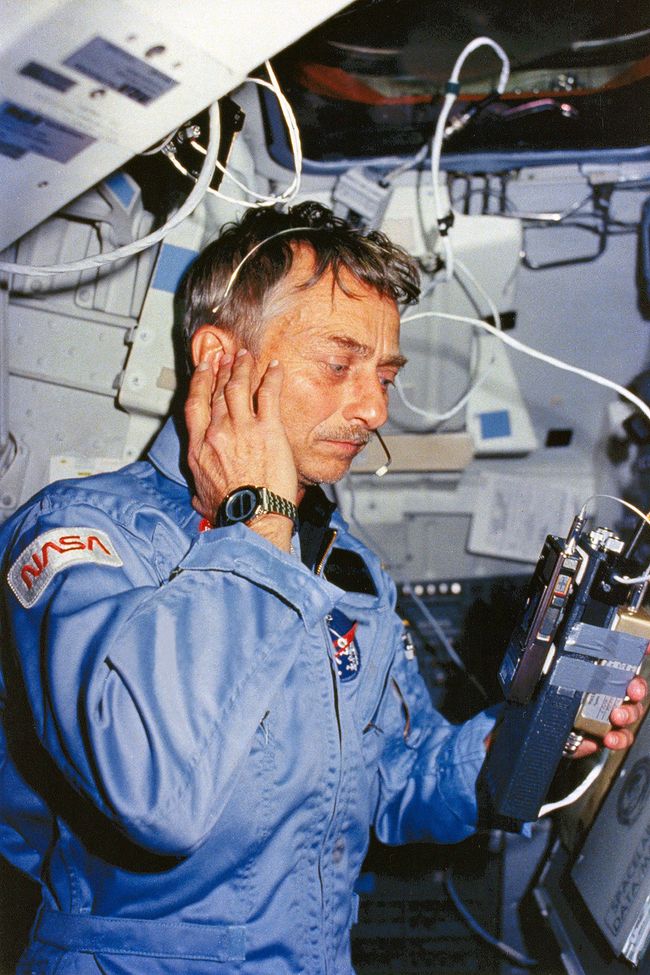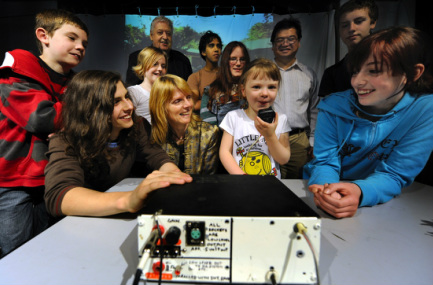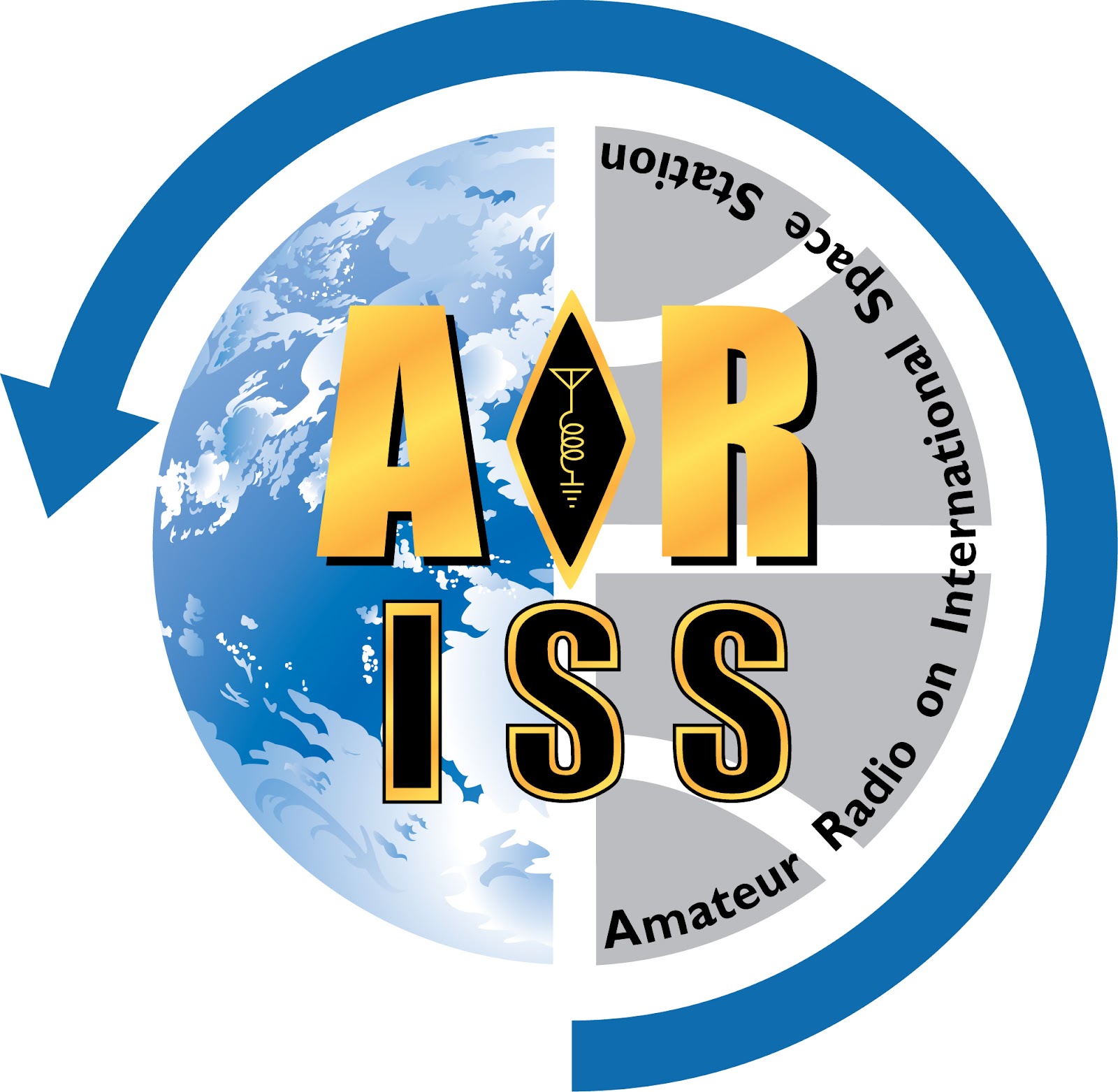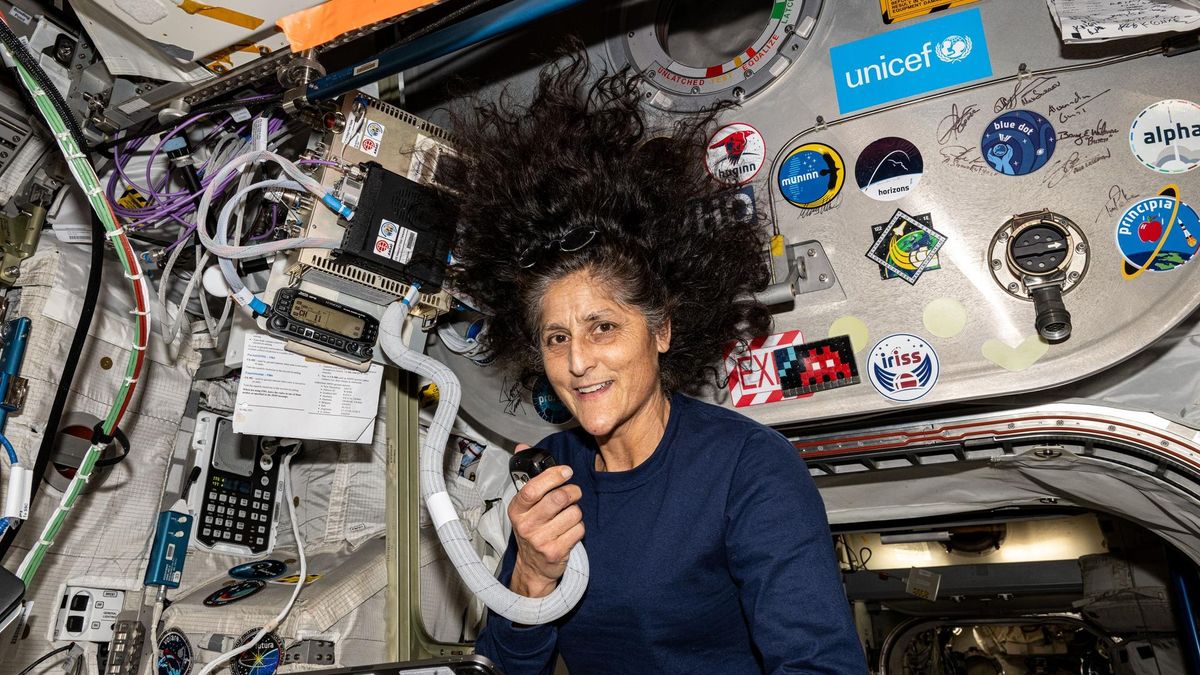Think about this: It’s been forty years since astronaut Owen Garriott, call sign W5LFL, pioneered amateur radio communications from space. He was a crew member of the Space Shuttle program’s STS-9 mission.
During that 1983 space shuttle flight, Garriott became the first person ever in space to communicate with amateur radio operators on the ground. He was also the first person to be heard by the public directly from space using simple radio receivers and scanners.
That event forever transformed astronaut communications from space, allowing amateur radio operators and the public to communicate with people in space. But don’t change that dial! There is much more to come in the field of amateur radio and the International Space Station.
Strong signal strength
The Radio Amateur Satellite Corporation, or AMSAT in shortwave sign language, is a worldwide group of amateur radio operators also known as ‘Hams’.
AMSAT itself was founded in 1969 as an educational organization. For decades, the organization has broadcast strong signal strength to emphasize that status.
For decades, AMSAT groups have had far-reaching, positive impacts on the future of both amateur radio and other government, scientific, and commercial activities in terms of the ultimate frontier.
Brewing at home
AMSAT’s continued achievements in space research and communications were boosted by the efforts surrounding the 1961 launch of Project OSCAR – the Orbiting Satellite Carrying Amateur Radio.
A US-based group on the West Coast built the very first amateur radio satellite, the 10-pound “home brew” OSCAR-1, assembled in a garage in Los Altos, California.
OSCAR-1 was launched as a secondary payload as “ballast” on a U.S. spy satellite from Vandenberg Air Force Base in California on December 12, 1961.
OSCAR-1 made its ascent into Earth orbit just four years after the launch of the former Soviet Union’s first Sputnik in October 1957.

Radio spectrum
“Since then, two groups – Project OSCAR and AMSAT – have launched more than thirty spacecraft designed and built by radio amateurs. The OSCAR number now exceeds a hundred satellites, but most of these were university satellites that wanted to use the amateur radio spectrum and to support the idea of a satellite for radio amateur use,” says Jan King, one of the founders of AMSAT .
“Amateur radio has launched and operated more satellites than most countries,” King told Space.com.
But for better signal strength, turn to amateur radio on the International Space Station (ARISS).
The ARISS program was created and managed by an international consortium of amateur radio and space agencies, including NASA, Russia’s Roscosmos, the Canadian Space Agency, the Japan Aerospace Exploration Agency and the European Space Agency.
Educational connections
Frank Bauer, also known as KA3HDO in call sign jargon, is executive director of ARISS-USA and serves as the group’s international chairman.
“We conduct 60 to 100 ‘educational connections’ with astronauts and cosmonauts on the ISS every year,” Bauer told Space.com.
Educational connections are on-board astronaut contacts in formal and informal educational settings. These can be formal schools, virtual schools or home schools, scouts, Boys and Girls Clubs, libraries, etc., Bauer explains. To date, ARISS has established about 1,700 connections with ISS astronauts, an initiative that began just a few weeks after the first crew aboard the outpost entered orbit, he said.
During that period, ARISS has achieved several milestones. On November 13 this year, the group celebrated 24 years of continuous operations and on December 21 marked the 24th anniversary of their first ISS school contact.
“Over the years, our connections have engaged between 40,000 and 200,000 youth per year,” Bauer said. “We were the first operational educational payload on the ISS.”

New milestones
In the coming years, ARISS will investigate new milestones that the group wants to achieve.
First, there is an ARISS 2.0 initiative, a new educational vision for the future, and one that is multi-faceted.
To that end, that strategy shall include:
- Developing and deploying interesting educational projects and lesson plans;
- Expanding space reach in Low Earth Orbit (LEO) with multiple commercial space stations and activities on the ISS;
- Expanding educational activities beyond LEO into deep space via lunar orbiters and landers, including NASA’s projected Lunar Gateway;
- Supporting science/technology projects that utilize ARISS capabilities and/or enhance science through radio techniques.
Projects in progress
There have been a series of partnerships, grants, and other ARISS team activities focused on education, space hardware development, and spaceflight operations.
Bauer pointed to ongoing projects, such as SPARKI (Space Pioneers Amateur Radio Kit Initiative) Radio Kit, which is currently operational through a grant from Amateur Radio Digital Communications (ARDC), a California-based foundation with roots in amateur radio and the technology of internet communication.
There are also partnerships with the private spaceflight group Axiom and NASA, Bauer added, “where we have supported all three Axiom mission crews.”
Also in development is the ARISS STAR (Space Telerobotics Using Amateur Radio), as well as Student Mission Control, also in development, Bauer said.

Blue sky to the moon
What about any blue-sky thoughts on future ARISS efforts that could tie in with the NASA Artemis Moon Base’s contact with future crews?
Bauer responded that the ARISS Amateur Radio Exploration (AREx) program has developed systems that can be deployed on manned and unmanned missions to the moon.
“Their goal is to inspire, engage and educate youth and lifelong learners in STEAM/STEM activities and encourage them to pursue STEAM/STEM careers,” said Bauer.
STEM stands for science, technology, engineering and mathematics, while STEAM stands for science, technology, engineering, artand mathematics.
Achievable goal
“We have a fairly mature hardware prototype of a system called CAVIAR (Communications, Audio, Video, Imaging using Amateur Radio), which will allow young people to actively immerse themselves in lunar exploration in the lunar environment,” Bauer added.
“This includes communication with astronauts during exploration activities, as well as the ability to take instant photos and videos, similar to what we achieved on the ISS. moon communication, unfortunately ARISS is feasible,” Bauer concluded.
To contact ARISS, visit their official website.

Hi Qoumi,
A few years ago, I was struggling to get traffic to my online business.
I had built what I thought was the perfect website, had an amazing offer, and even spent money on ads—but nothing worked.
It felt like I was shouting into the void, hoping someone would notice me.
Then, I discovered a completely different approach, one that top entrepreneurs quietly use to attract a flood of traffic without constantly chasing it.
The secret? Traffic isn’t created—it’s redirected. Instead of hoping people find you, you strategically position yourself where they already are.
This simple shift changed everything for me. It’s the foundation of what some of the most successful marketers use to drive traffic effortlessly.
If you’ve ever wondered how certain businesses seem to attract leads on autopilot, today, I’ll break down the step-by-step process so you can do the same.
Let’s dive in:
https://marketersmentor.com/unlimited-traffic.php?refer=qoumi.com
Talk soon,
Jayrn
Unsubscribe:
https://marketersmentor.com/unsubscribe.php?d=qoumi.com